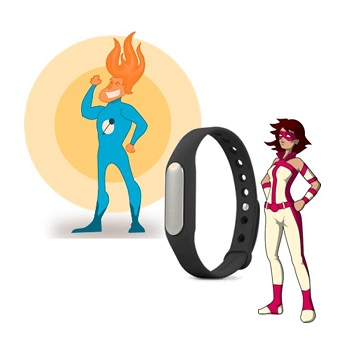A new report by Outsell has shown that digital ad budgets will rise, while print ad spending will fall.
Outsell has now released a report that has shown that digital and mobile advertising budgets will be increasing in 2016 while at the same time the amount of budget dedicated to print ads will be on their way down.
The research looked into the spending preferences of marketers, finding that top priority went to companies’ own sites.
After websites, the next largest amount of the ad budget went to television and e-mail marketing. That said, the report pointed out that social marketing was a growing trend. Mobile advertising would be seeing a significant boost in the amount companies were dedicating specifically to that channel, as well. That said, on the flip side of the coin, non-digital methods of advertising, such as custom print, direct mail, print directories, and ads placed in newspapers and magazines are all continuing to droop due to a growing consumer dependence on digital techniques for placing brands and messages in front of consumers.
Mobile advertising comes with the significant advantage of placing ads in front of consumers at any time.
 This is something that print simply cannot achieve. Social is particularly effective in that effort, especially over platforms such as Facebook and Twitter as companies seek to boost engagement with their target market through the new social brand building and lead generation tools that are now easily accessible to businesses of all size.
This is something that print simply cannot achieve. Social is particularly effective in that effort, especially over platforms such as Facebook and Twitter as companies seek to boost engagement with their target market through the new social brand building and lead generation tools that are now easily accessible to businesses of all size.
Outsell’s report predicted that mobile marketing advertising spending could increase by 38 percent by the close of the year. Social ad spending will also be increasing, but by 15 percent.
Mobile advertising will have risen to $23 billion in spending and is now considered to be the fifth largest form of digital marketing, immediately after social and search. Marketers appear to have made the discovery of its true value in 2015 and are now scrambling to use this channel to be able to reach consumers through a range of different ad formats. Fifty four percent of marketers have said they will be focusing their mobile ad spend on various types that reach consumers by way of apps.
A recent study in the International Journal of Fashion Design, Technology and Education says big things are coming.
The outcome of a new study has now been published in the International Journal of Fashion Design, Technology and Education and has suggested that wearable technology will give people the ability to “do things they could not do before.”
From the sounds of it, we could be headed into quite the fascinating future in terms of our potential.
There have already been devices and mobile apps being demoed as prototypes that have shown that it won’t be long before wearable technology will be helping people to be able to see, hear and even speak better than was ever possible for them. This includes assisting people who have never been able to see, hear or speak in their lives, or who have had those abilities limited or removed by illness or injury.
That said, the potential for wearable technology is there for virtually everyone, said the study.
 The research said that providing solutions for various challenges will turn wearables into more than just a fad. Instead, there researchers believe that there will be super-powers on their way as a result of the use of these devices. The research pointed out that the responses of the participants frequently brought up abilities and powers that “normal humans” don’t have. Among the sixteen total professionals in wearable tech who were surveyed, twelve believed that the devices would one day provide users with abilities beyond those that come naturally to them.
The research said that providing solutions for various challenges will turn wearables into more than just a fad. Instead, there researchers believe that there will be super-powers on their way as a result of the use of these devices. The research pointed out that the responses of the participants frequently brought up abilities and powers that “normal humans” don’t have. Among the sixteen total professionals in wearable tech who were surveyed, twelve believed that the devices would one day provide users with abilities beyond those that come naturally to them.
Among those who are most likely to benefit from wearables, according to the survey respondents, are the “less-able bodied and the able bodied,” which essentially appears to imply that everyone will be able to find a use for these devices in one way or another.
Among those who are less-able bodied, there will be wearable technology such as improved hearing aids and other devices that will assist them to be able to do what they previously haven’t been able to, or enhance their abilities in areas in which they have been physically limited. On the other hand, in the case of the able-bodied, one of the respondents, Mary, explained that “people who have able bodies able to do things that they could not do.”
 This is something that print simply cannot achieve. Social is particularly effective in that effort, especially over platforms such as Facebook and Twitter as companies seek to boost engagement with their target market through the new social brand building and lead generation tools that are now easily accessible to businesses of all size.
This is something that print simply cannot achieve. Social is particularly effective in that effort, especially over platforms such as Facebook and Twitter as companies seek to boost engagement with their target market through the new social brand building and lead generation tools that are now easily accessible to businesses of all size.
 The research said that providing solutions for various challenges will turn wearables into more than just a fad. Instead, there researchers believe that there will be super-powers on their way as a result of the use of these devices. The research pointed out that the responses of the participants frequently brought up abilities and powers that “normal humans” don’t have. Among the sixteen total professionals in wearable tech who were surveyed, twelve believed that the devices would one day provide users with abilities beyond those that come naturally to them.
The research said that providing solutions for various challenges will turn wearables into more than just a fad. Instead, there researchers believe that there will be super-powers on their way as a result of the use of these devices. The research pointed out that the responses of the participants frequently brought up abilities and powers that “normal humans” don’t have. Among the sixteen total professionals in wearable tech who were surveyed, twelve believed that the devices would one day provide users with abilities beyond those that come naturally to them.